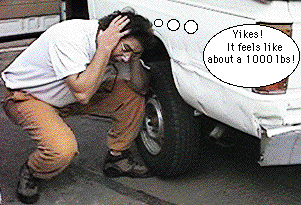
|
By measuring the amount of surface each tire presses onto
the ground and the pressure inside each tire, you can
calculate the weight of a car.
|
|
|
![]()
|
You need to measure the surface area of the bottom of
each tire. This "footprint" can be found by shoving pieces
of cardboard against the base of each wheel. Remember to set
the parking brake while taking these measurements.
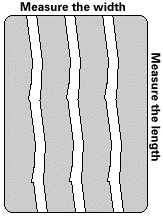
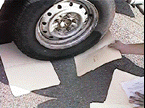

Shove the cardboard under the tire in all four directions. 2) Roll the car off from the cardboard and measure the area bounded by the cardboard. Take measurements in inches.

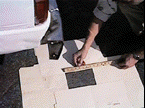
3) Use a tire gauge to measure the internal air pressure of the tire.
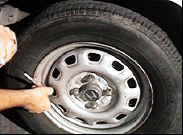
4) Find the amount of tire surface area touching the
ground. To find this, multiply the length and width of the
"footprint." Your answer should be in square inches.

|
![]()
|
All of a car's weight is spread among each of the four tires. The weight on each tire is spread among it's footprint. |
![]()
|
No accounting for tread.
|
